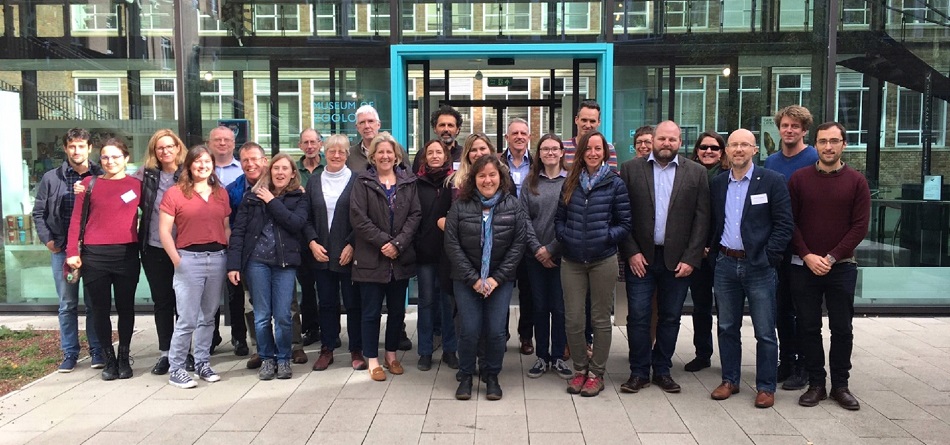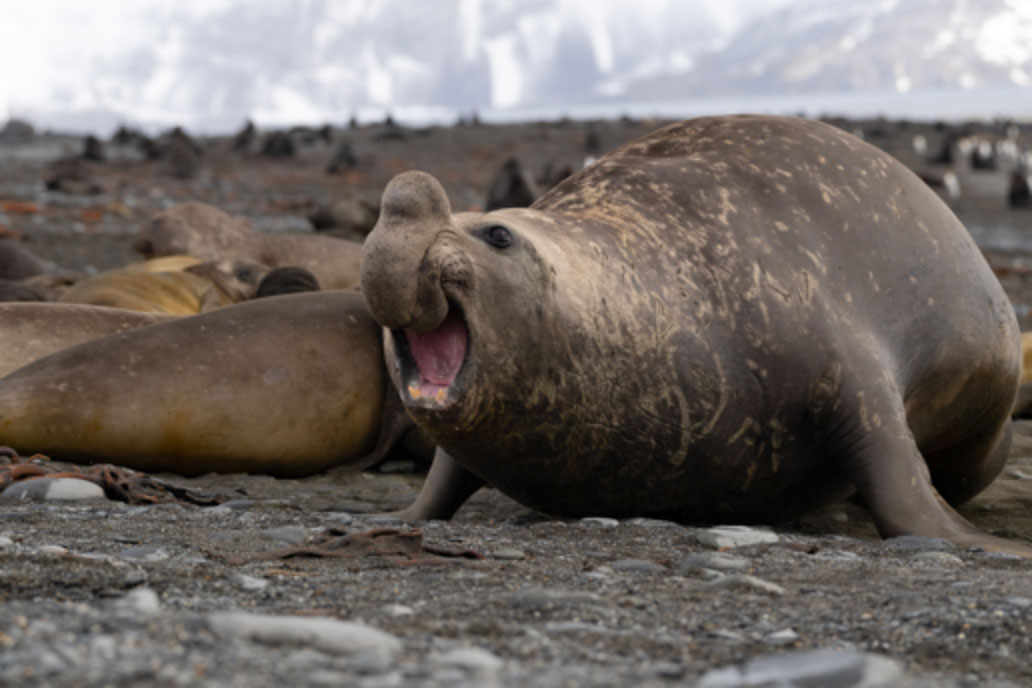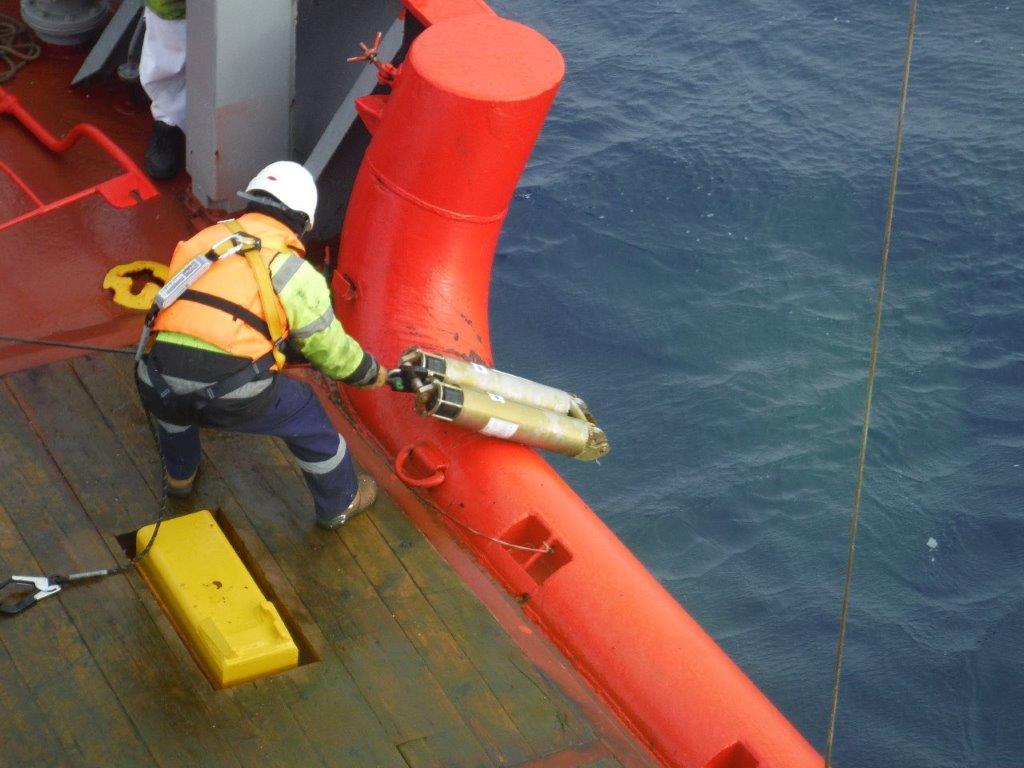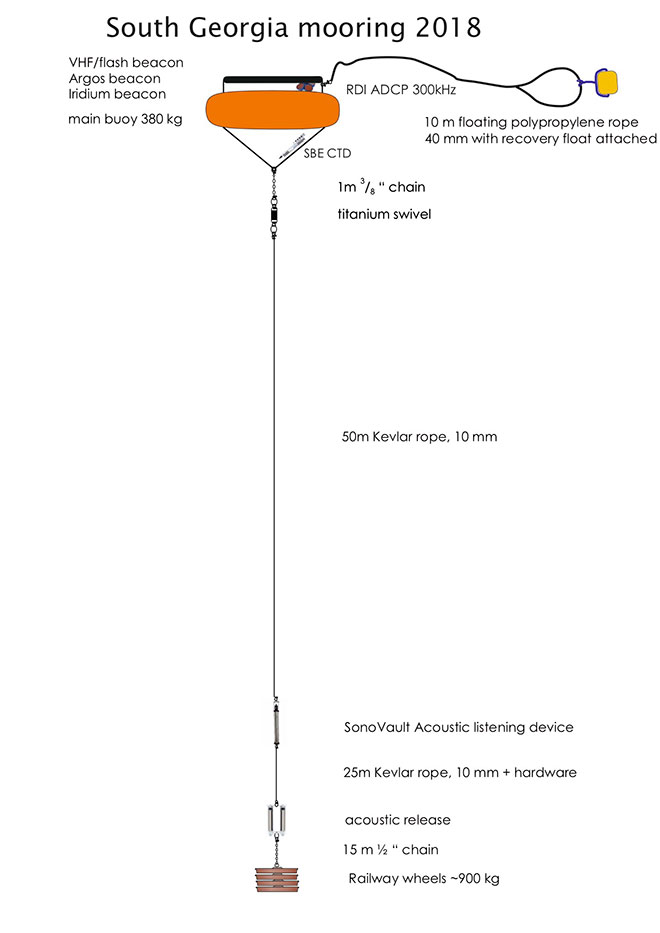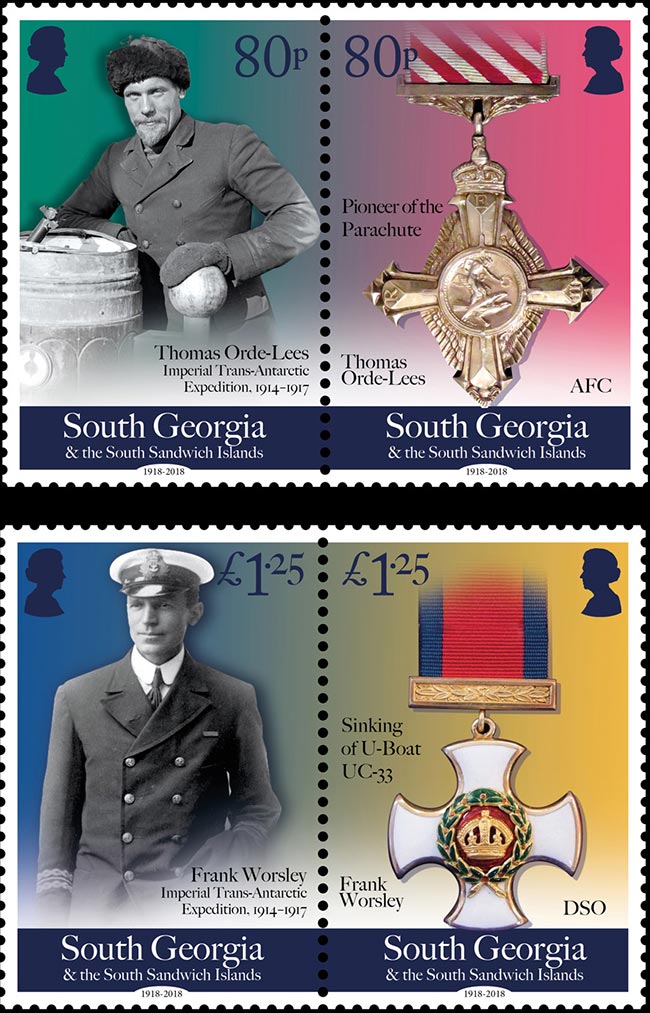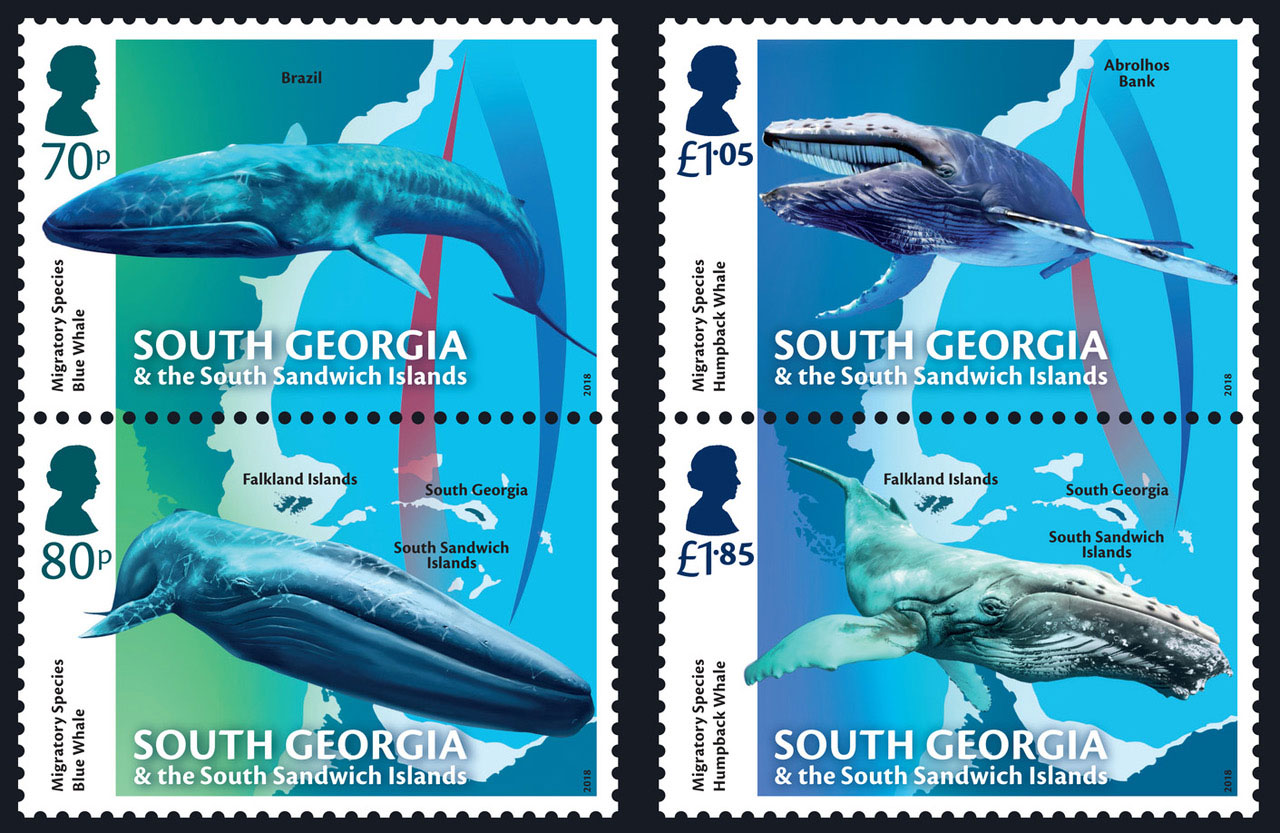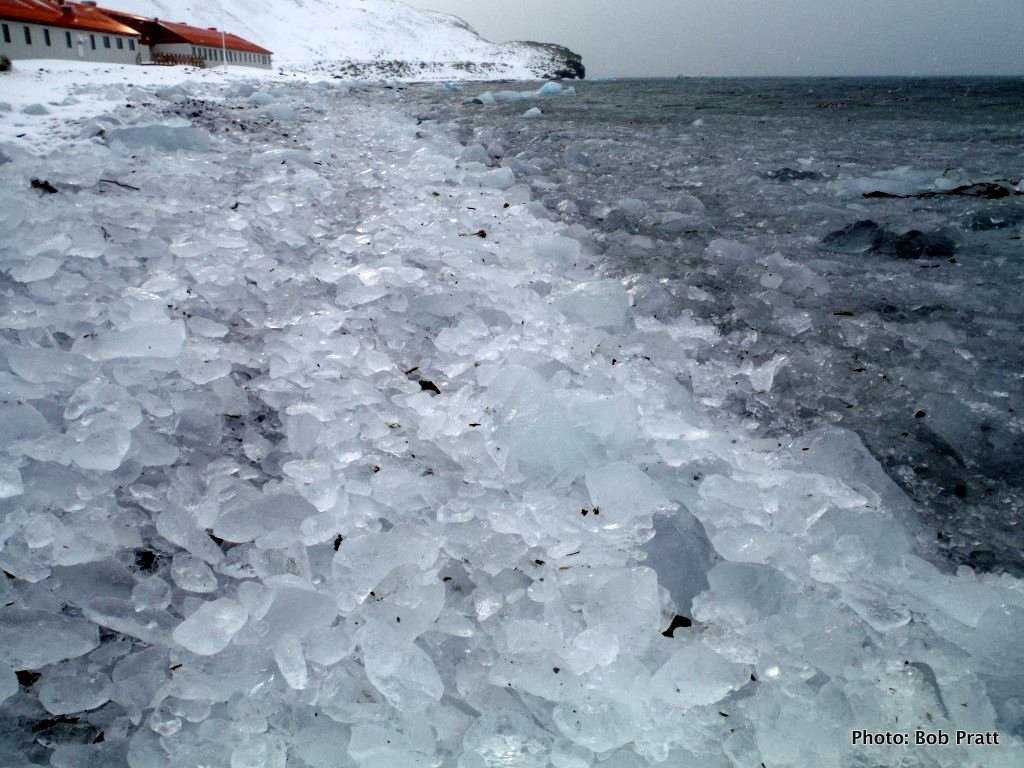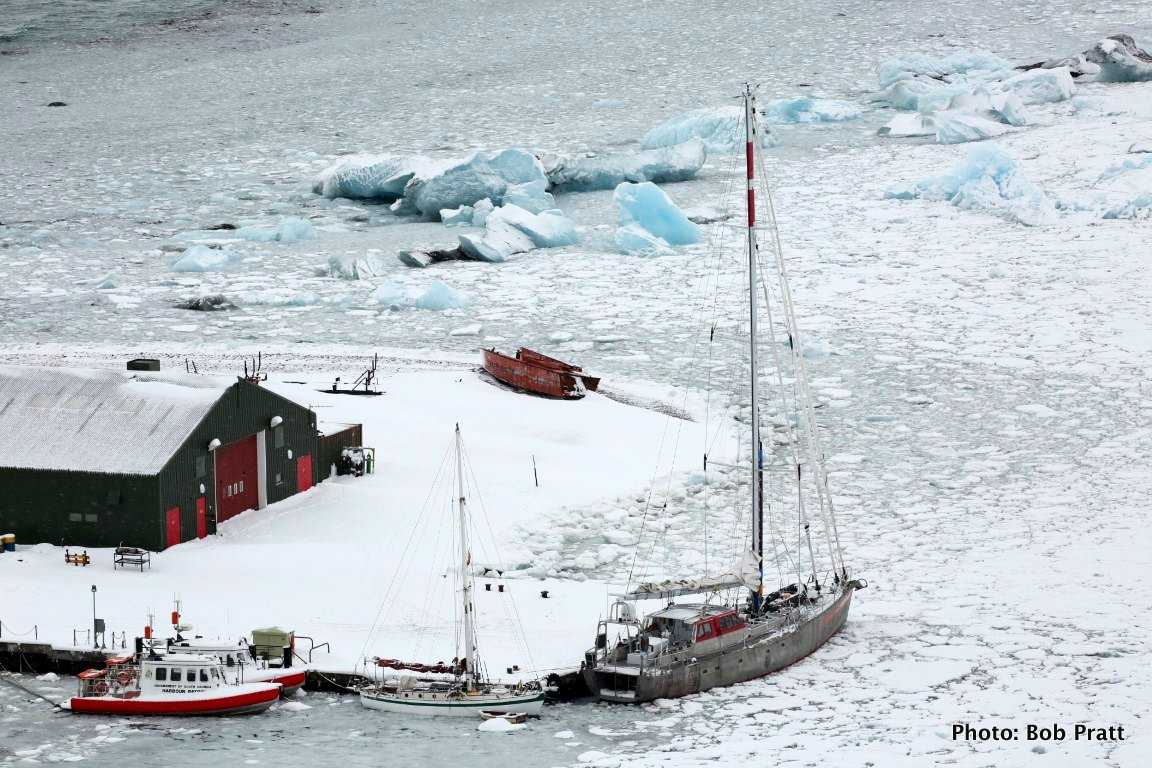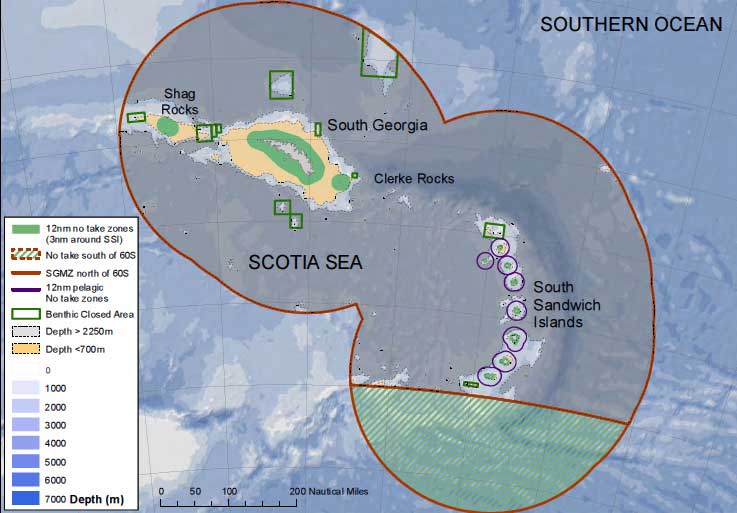 The first 5-year review of the SGSSI sustainable use Marine Protected Area is reaching its conclusion and the Government has now shared the report of the MPA Advisory Group. The report was compiled by Dr Colin Clubbe, the Independent Chair of the MPA Advisory Group, to synthesis the outcomes and advice provided by the Group through the MPA Review Process.
The first 5-year review of the SGSSI sustainable use Marine Protected Area is reaching its conclusion and the Government has now shared the report of the MPA Advisory Group. The report was compiled by Dr Colin Clubbe, the Independent Chair of the MPA Advisory Group, to synthesis the outcomes and advice provided by the Group through the MPA Review Process.
The Government of South Georgia & the South Sandwich Islands would like to thank all those that took the time to be involved in the two MPA review workshops. The Government is grateful for the dedication and commitment they have shown to the task of reviewing each measure of our MPA, and to Dr Clubbe for presenting us with the recommendations of the Advisory Group.
It is immediately obvious that the build-up of scientific evidence to support the measures currently developed is weighty, with over 200 peer reviewed documents contained in the background paper. It is now GSGSSI’s task to consider the range of recommendations and determine what changes to management of our MPA we might wish to implement and why, and this should occur by the end of November.
For further information regarding the Marine Protected Area and to download the report click here.
As part of the GB Non Native Species Secretariat project to improve biosecurity in the UKOT’s, representatives from South Georgia & the South Sandwich Islands, the Falkland Islands and the British Antarctic Territory joined taxonomic experts from around the world to conduct a horizon scanning exercise. The purpose: To prioritise invasive non-native species likely to arrive, establish and impact each Territory.
A long list of species was whittled down through discussion, research and expert consensus to arrive at the list of high-risk species for each Territory, considering impacts on biodiversity, health and economy.
90% of the UK’s biodiversity is found in the Overseas Territories, and one of the greatest risks to biodiversity, especially for island ecosystems, is the introduction of non-native invasive species. Therefore, having a ‘most unwanted’ list is not just an academic exercise, but a valuable tool to allow the Territories to focus their limited resources where they are needed most.
For South Georgia & the South Sandwich Islands the focus was on biodiversity impacts rather than those of human health or economy. Perhaps unsurprisingly given the success of the rat eradication project, taking the top spot in terms of least desirable species were rats & mice. Past experience leaves us in no doubt that without adequate biosecurity, rodents could return, establish and have major negative impacts once again.
What was more surprising however, was the prevalence of marine organisms among the highest ranking unwanted species. Marine invasive species are able to spread to areas beyond their natural range by attaching to ship’s hulls as fouling, or in ballast water. The marine environment surrounding South Georgia is known to support high levels of endemic and range-edge species. The area is particularly vulnerable to climate change and increased potential for establishment of invasive species.
Also on the list were invasive plants and invertebrate species, showing that the simple biosecurity measures we ask all visitors to South Georgia & the South Sandwich Islands to adopt, such as checking footwear, clothing and bags for seeds, soil and insects, are vital and are an important part of protecting the islands from harm and safeguarding the ongoing work to eradicate a number of invasive plant species in support of the 2016-20 invasive plant strategy.
Following on from the horizon scanning exercise, the next step of the process is to develop pathway action plans, which will set out mitigation measures to minimise the risk of priority species arriving and establishing.
GSGSSI already has a comprehensive biosecurity system, including a suite of biosecurity measures to minimise the risk of re-introduction of rodents. A recent rodent detector dog trial used specially trained dogs to ensure that vessels bound for South Georgia were rodent free before departing from the Falkland Islands. This offered a ‘gold standard’ tool for protecting South Georgia from rodent re-invasion and we are working with the Falkland Islands Government towards a continuation of that programme in 2019, with the view to developing a permanent Falkland Islands based biosecurity detector dog programme in the future. The project is being supported by SGHT, FOSGI & the RSPB.
The threat of marine invasive species is potentially a much more challenging issue to resolve, but GSGSSI is committed to protecting all of the ecosystems in South Georgia & the South Sandwich Islands, above and below the tide line, and will work towards developing appropriate measures to minimise the risk of marine invasive organisms arriving and establishing in the future.
With thanks to:
GBNNSS who are delivering the project, the Centre for Ecology & Hydrology who led the workshop, and the IUCN who hosted the workshop in Cambridge.
A British gentleman visiting Salisbury Plain on board an expedition cruise ship, received serious but non-life threatening injuries when he was bitten by a bull elephant seal on Monday 12th November.
The elephant seal inflicted two bites and it is understood the situation could have been worse but for the quick thinking of the gentleman’s wife who raised the alarm. Medical aid was administered by the ship’s doctor and expedition staff. The passenger was evacuated back to the ship where he was stabilised. The ship returned to Stanley, Falkland Islands in order to seek further medical attention. This highly unusual and unprovoked incident highlights the importance of remaining alert to the proximity and behaviour of animals when visiting wildlife areas.
GSGSSI wishes to remind visitors that, in accordance with its own guidelines, extreme care must be exercised at all times in proximity to seals. Although elephant seals generally appear to be slow moving and not overtly aggressive towards people, like all wild animals their behaviour can be unpredictable, especially during the peak breeding season.
The Government of South Georgia & the South Sandwich Islands wishes the gentleman a speedy and complete recovery.
The full IAATO Seal Watching Guidelines may be viewed here.
Excellent biosecurity standards are essential to ensure that visits to South Georgia are responsible and environmentally-sensitive. Ongoing monitoring of standards, and development of mitigation measures remains a priority for GSGSSI. We ask all visitors to South Georgia for 100% compliance with our biosecurity standards.
Every passenger (including crew) must take every care to remove biosecurity risks from clothing, bags and shoes that are being taken ashore. We recognise the significant efforts that passengers and expedition staff put into protecting South Georgia, and the Government is always looking for new ways to help visitors get it right.
During the 2017/2018 season, Government Officers conducted biosecurity inspections on every cruise ship visiting South Georgia; in total, 55% of passengers were inspected. The purpose was to assess the efficacy of biosecurity checks on board, and to measure the biosecurity risks posed by
shore landings. The data showed that 81% of visits achieved acceptable or good standards of biosecurity, however 19% of visits put South Georgia at an unacceptable risk of introduction of non-native species and pathogens; the need to address this is clear.
In response to this data, GSGSSI have initiated a biosecurity audit system, whereby the efficacy of biosecurity measures implemented on visiting vessels is assessed.

Example biosecurity audit report & traffic light system.
As with previous years, Government Officers will inspect a sample of passengers going ashore to establish the efficacy of biosecurity procedures, however this season the checks will be more standardised and the results shared with expedition staff on the vessel, as well as with the vessel operators and IAATO. In this way we aim to support vessels to improve biosecurity procedures, such that the standard of biosecurity is raised, not just for landings at Grytviken, but for every shore landing.
We hope this feedback will help operators and expedition staff measure the efficacy of biosecurity measures implemented during the season, resulting in an overall improvement of biosecurity standards and bringing us closer to achieving the 100% pass rate expected for every visit, every time at every site on South Georgia.
On the 25th September at 10.30 GMT the Pharos SG successfully located and recovered an acoustic release mooring buoy from just north of Bird Island. The buoy belongs to the British Antarctic Survey (BAS) and was originally deployed in 2002, since then it has been collecting data from deep in the ocean. The mooring itself is a large orange buoy of about 450kg in weight and 1.7m diameter with a strong stainless steel frame on the top and underneath. In the pockets of the buoy are various scientific instruments.
Normally the buoys are acoustically released and then recovered straight away, but it appears a mooring shackle failed which released the buoy early, luckily the buoys have positioning beacons on them to allow then to be located once on the surface. Once the Pharos SG had recovered the buoy it was then delivered back to the Falklands at the end of the fisheries patrol where the data will be eventually collected by BAS scientists.
Two New Stamp Releases
The Government of South Georgia & the South Sandwich Islands has released a set of stamps which commemorates the centenary of the end of World War I and the role Shackleton’s men played in the conflict. This set is part of a complementary issue of stamps with the British Antarctic Territory to mark this milestone anniversary.
Sir Ernest Shackleton’s plan for the Imperial Trans-Antarctic Expedition was audacious and, to some polar experts, foolhardy. One party, aboard the Endurance, would sail to the southern coast of the Weddell Sea and set up a base with six of the men then setting out on a 1,500-mile journey across the continent, via the South Pole, to another base on the coast of the Ross Sea. On the way they would pick up supplies set out for them by a party from the Ross Sea base that had landed from the Aurora.
Both halves of the expedition faced near disaster. Endurance was crushed in the pack-ice and the crews fight for survival and eventual rescue has become legendary. On the other side of Antarctica, Aurora was trapped in the ice and barely made her way back to New Zealand, having left 10 men stranded ashore. Despite enormous hardships, and the deaths of three men, they managed to lay the depots of food that would have been vital for Shackleton and his crossing party.
The onset of World War I meant that the expedition nearly did not take place. On 3 August 1914, as Endurance was about to depart, Germany declared war on France and Britain mobilised her forces. The immediate effect on the expedition was that three members left to rejoin their units. Shackleton cabled the Admiralty in London offering Endurance and her complement. The First Sea Lord, Winston Churchill, replied ‘Proceed’ and, with the backing of King George V, Endurance set sail for Antarctica on 8 August.
There was criticism at home that Shackleton and his men should be fighting for King and Country rather than ‘messing about on icebergs’. Shackleton countered that they were engaged in the ‘White Warfare of the South’. As proved to be the case, the expedition was sometimes as fraught with danger as facing enemy fire.
When the men returned to civilisation, they found the world was still at war. The war with Germany had been expected to be short-lived but, three years later, it continued to engulf Europe. Almost to a man, the explorers joined the armed forces or returned to their previous lives in the Merchant Navy. Even Perce Blackborow, despite having the toes of his left foot amputated on Elephant Island, joined the Merchant Navy. Some made the ultimate sacrifice for doing so. Tim McCarthy was killed when his ship was torpedoed. Alfred Cheetham and Ernest Wild, Frank Wild’s brother, also died at sea. James McIlroy, James Wordie and Clarence Mauger were badly injured.
At 42 years of age and too old for conscription Shackleton was gazetted as a temporary Major and joined Syren Force, a multinational force sent to Murmansk in northern Russia, first to defend it against the Germans and then, after the Armistice, to support the White Russians against the Red, Bolshevik, forces. His task was to organise winter equipment and he was joined by Alexander Macklin, Leonard Hussey, Joseph Stenhouse and Frank Worsley.
Thomas Orde-Lees, a captain in the Royal Marines, joined ITAE as the motor expert and developed two models of motor-sledge. During the expedition he was placed in charge of stores. On return to Britain he transferred to the Royal Flying Corps with the help of Shackleton, and served in the Balloon Service on the Western Front. He became an active proponent of the use of parachutes. To convince military commanders of their practicality and value, Orde-Lees jumped, headfirst, from the top of the Tower Bridge into the River Thames, barely 50 metres below. He later made low level descents from aircraft to demonstrate parachutes at home and abroad. Orde-Lees was awarded the Air Force Cross for this pioneering work.
Frank Worsley, a New Zealander and a veteran of sailing ships, was appointed captain of Endurance. He has become famous for navigating the James Caird from Elephant Island to South Georgia. A member of the Royal Navy Reserve, he was given command of the ‘mystery ship’ PQ61 and sank the U-boat UC33 by ramming, for which Worsley was awarded the Distinguished Service Order. In 1918 Worsley joined Shackleton in northern Russia and helped organise equipment and stores in Archangel.
More information on the stamps can be found at www.pobjoystamps.com and the stamps are available to purchase through https://www.falklandstamps.com
GSGSSI has also released stamps celebrating Migratory Species. This issue is the first of a series of a complimentary suite of stamps being issued in 2018 by British Overseas Territories including Ascension Island, British Antarctic Territory, Falkland Islands and Tristan da Cunha.
The globe is crisscrossed with borders and boundaries, designating countries and states each with its own culture, identity and regulations. However, these geopolitical borders were created by humans for humans and animals follow their own geography, wonderfully oblivious to the way we have divided up their world. Animals often require different habitats and environmental conditions for mating, breeding and feeding and so migrate between areas in order to find the resources they need. Some migration routes are relatively short, perhaps just between one side of a mountain range to another, but some species will travel for thousands of miles. A wide range of animal groups makes such mammoth migrations; including birds, mammals, fish, invertebrates and reptiles. Species which make these epic journeys have adapted to time their movements in response to external and internal cues. External cues include a range of environmental signals; including day length, local climate and availability of food. While internal cues may include body condition or the bodies internal, circadian, rhythms. Once they are underway, animals may navigate with the aid of the sun, stars, magnetic fields, winds, currents and even smell, however, the exact mechanisms remain unknown in many animals. Whether by instinct or learned group experience individuals can follow the same routes and return to ancestral breeding and feeding grounds year on year.
Because of the large distances, the different habitats and the multiple National borders through which they pass, conserving migratory species presents a particular challenge. The first difficulty is tracking species to find out where they actually go. The advent of modern satellite tracking devices has made this a little easier but even then attaching a tag to wild animals, sensitive to human disturbance, is not always straightforward. Even once a migration route is known, countries along that route need to agree shared conservation goals and enact them under their local policies and procedures. If a conservation threat persists at just one step along the way, the species is put in jeopardy so it is imperative that nations work together.
To help facilitate the conservation of migratory species, a number of global platforms exist including the Convention on Migratory Species (CMS), which is an environmental treaty under the umbrella of the United Nations Environment Programme. First signed in Bonn in 1983, this year the Convention celebrates its 35th anniversary. Outside of formal agreements like the CMS, countries work together through a variety of conservation programmes and non-governmental organisations. Conservation initiatives that benefit migratory species include promoting sustainable habitat conservation, policing illegal trade, bycatch prevention and reducing disturbance from marine noise.
Blue Whale Balaenoptera musculus
The largest known creature to ever live on Earth, blue whales are gentle giants. Also a type of baleen whale they mainly feed on krill and other plankton. Verified measurements of blue whales rarely exceed 28 m (92 ft), although larger animals were recorded during the whaling era. A very large animal could weigh close to 200 tonnes. Blue whales are usually loners and rarely form groups. Tagging during the Discovery investigations (1901-1904) indicated that most blue whales passed through South Georgia waters on their way to and from breeding grounds, off the coast of Brazil, and feeding grounds on the further south. In recent years, blue whale sightings around South Georgia have increased in number with many encounters occurring around Shag Rocks. During the whaling era, it is estimated this species was hunted to less than 5% of the original population and is now classed as Endangered by the IUCN.
Humpback Whale Megaptera novaeangliae
Humpback whales are part of a family of baleen whales, which are characterised by giant ‘baleen plates’ that hang from their jaws. These plates are used to filter small fish and crustaceans, such as krill, from huge gulps of seawater. Ranging from 12-19 m in length and weighing in at around 36,000 kg they are a common sight around South Georgia during the summer months but can be seen throughout the year. Feeding on the rich coastal waters they can often be seen in large dispersed groups along the north coast, breaching, rolling and slapping the water with their pectoral flippers. However, the cold waters of the Southern Ocean are not suitable for the whales to calve and so in the winter months many journeys north to the Patagonian Shelf.
More information on the stamps can be found at www.pobjoystamps.com.
National Geographic has produced a series of 5 short films about South Georgia wildlife.
“National Geographic wildlife filmmaker Bertie Gregory takes audiences on an adventure to iconic South Georgia Island. Sailing through the roughest ocean on the planet in a 50-foot boat, his team’s target is the sub-Antarctic island, known for its breathtaking scenery and high concentration of wildlife.”
Collectively entitled “Resurrection Island”, the 5 episodes are:
“EPISODE 1: ONCE NEAR EXTINCTION, FUR SEALS THRIVE ON RESURRECTION ISLAND”
“EPISODE 2: WATCH MACARONI PENGUINS SWIM, SURF, AND DODGE SEALS TO SURVIVE”
“EPISODE 3: ALBATROSSES’ LIFE-LONG BOND BEGINS WITH THIS ELABORATE COURTSHIP”
“EPISODE 4: GO INSIDE AN ANTARCTIC ‘CITY’ OF 400,000 KING PENGUINS”
“EPISODE 5: HOW WILDLIFE OVERCAME SOUTH GEORGIA’S HAUNTING PAST”
(By British Antarctic Survey, BAS)
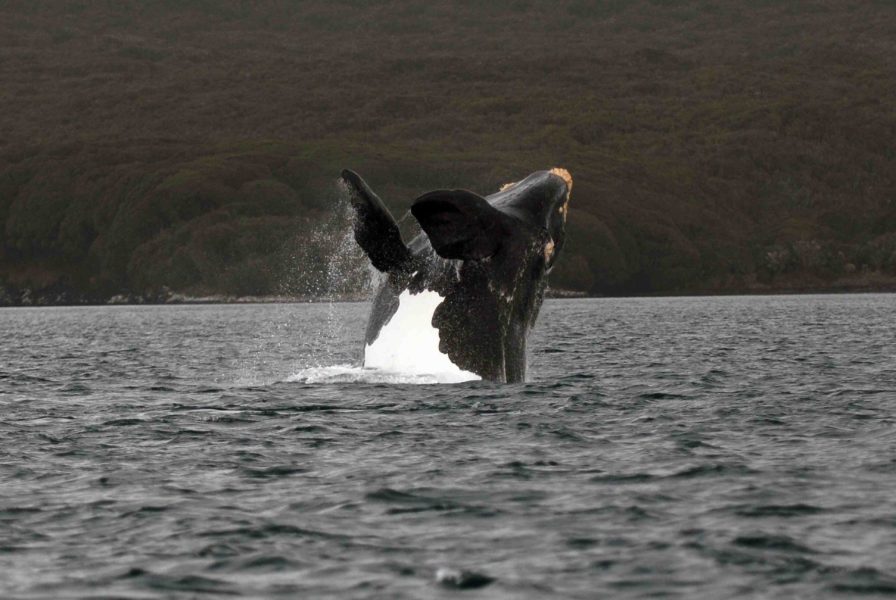
Southern Right Whale captured around the sub-Antarctic island of South Georgia. Photo credit: Carlos Olavarria.
Scientists have used detailed high-resolution satellite images provided by Maxar Technologies’ DigitalGlobe, to detect, count and describe four different species of whales. Reported this week in the journal Marine Mammal Science, this study is a big step towards developing a cost-effective method to study whales in remote and inaccessible places, that will help scientists to monitor population changes and understand their behaviour.
Each species was observed in one of their known aggregation areas, where individuals come together to congregate: southern right whales off Argentina, humpback whales off Hawaii, fin whales in the Pelagos Sanctuary in the Mediterranean and grey whales off the coast of Mexico. Already it has helped whale conservation bodies to identify 10 key inaccessible whale populations that would benefit most from the application of satellite imagery in studies.
Lead author Hannah Cubaynes, a whale ecologist at British Antarctic Survey (BAS) and University of Cambridge explains:
“This is the most detailed imagery of whales captured by satellites to date. It’s exciting that the improved resolution (now at 30 cm) reveals characteristic features, such as flippers and flukes, which can be seen in the images for the first time. Whales live in all oceans. Many areas are difficult to access by boats or planes, the traditional means of monitoring whales. The ability to track whales without travelling to these remote and inaccessible areas, in a cost-effective way, will be of great benefit to conservation efforts for whales.”
You can read the full press release here.
Falklands’ patrol HMS Clyde visits South Georgia on fishery protection
“The Falkland Islands patrol ship HMS Clyde is on her usual patrol area during the austral summer which is South Georgia, 700 miles away. The remote archipelago is as far south of the Equator as Newcastle upon Tyne is north of the invisible line around the globe – but without the benefit of the Gulf Stream, endures far less clement weather.”
Prepping for penguins
“It’s a hopping-off point to get on a boat and go see the penguins in the wild on South Georgia Island.”
The Big Meltdown
“Dion Poncet came of age in a place almost no one calls home. He was born on a sailboat in Leith Harbour, an abandoned whaling station on South Georgia island.”
A Museum-Worthy Model
“In March 2016, when I returned from my second trip to South Georgia & the Falklands I got a bug to build. I’m a modeler in my spare time—I primarily do model railroading but I was inspired by Shackleton’s epic adventure and thought it would be fitting to make a model of the Endurance.”
Obsessive Derring-Do
“The setting of White Darkness is the anti-tropics, Antarctica, perhaps the most brutal terrain on the planet. Its protagonist is Henry Worsley, like Fawcett a British adventurer.”
Share[addtoany]


